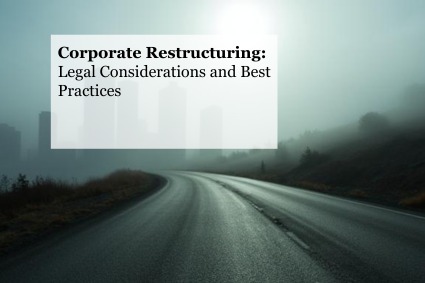RBI’s Draft Guidelines on Climate-Related Financial Risks: A Paradigm Shift in Regulatory Oversight

India’s growth rate of 7.2% in fiscal 2022-2023 was the second-highest among the G20 countries and almost twice the average for emerging market economies that year.[1] The country is an emerging economy. It has been a significant growth engine for the world, contributing 16% to the global growth in 2023. It is also situated at a strategically advantageous position in world geography. We get sunlight for the majority of the days which is more than 300 sunny days a year. It was about time that we realized to utilize the environment around us for our benefit.
It would be incorrect to assume that the country only has advantages and no disadvantages when it comes to its location in geography. However, we did a commendable job in utilizing the advantages for our good and also adapting to the disadvantages. One of the examples would be utilizing solar panels to meet increasing energy demands and other instances can be the cultivation of water-intensive crops like sugarcane where rainfall is abundant like Maharashtra and water-efficient crops like millet in Rajasthan. This is a smart way to deal with the needs of a country that is growing and as a consequence of such growth, the needs of its people are also increasing.
Every country just like India is dependent on the environment however humans have managed to reverse the situation wherein the environment is now dependent on us. The needs may change but one thing is constant, we cannot survive without the environment but the environment will not only survive but thrive without us something we saw in COVID times. The ramifications of climate change and environmental degradation pervade all realms, transcending geographical boundaries, sectors, and demographics without prejudice; however, the magnitude of their impact varies across different spheres. A propitious development is a cognizance among the global citizenry regarding the anthropogenic causation of nature’s despoilment, which has catalyzed a collective endeavor to mitigate and redress the deleterious consequences.
The realization that the environment’s survival hinges on human actions has prompted a collective global effort to mitigate climate change’s adverse effects. Various measures have been taken by countries together like the Conference of the Parties (COP) and G20 and several measures are being taken individually within the countries like Swach Bharat Abhiyan, Namami Gange, EIA, National Action Plan on Climate Change (NAPCC), India’s commitment to achieving a target of net zero emissions by the year 2070 etc.
Recognizing a problem is the initial stride toward finding a solution, and this realization has dawned upon us. An exemplary endeavor in our journey toward embracing climate resilience is the Reserve Bank of India’s (RBI) introduction of draft guidelines on the ‘Disclosure framework on climate-related financial risks, 2024.’ These guidelines mark a significant step in acknowledging and addressing the financial risks posed by climate change, underlining our collective commitment to a sustainable future.”.
The framework mandates disclosure by regulated entities (REs) on four key areas of governance, strategy, risk management, and metrics and targets. The central banking regulator recently released draft guidelines on climate risk and sustainable finance and the framework for acceptance of green deposits. The current disclosure framework is a step towards bringing the climate risk assessment, measurement, and reporting requirements under the mainstream compliance framework for financial sector entities in India. This move will help incorporate climate-related issues into the overall organizational culture, policies, and operations.
As per the draft guidelines, it is mandatory for all Scheduled Commercial Banks (excluding Local Area Banks, Payments Banks, and Regional Rural Banks), Tier-IV Primary (Urban) Co-operative Banks, All-India Financial Institutions (such as EXIM Bank, NABARD, NaBFID, NHB, and SIDBI), and Top and Upper Layer Non-Banking Financial Companies (NBFCs) to disclose climate-related financial risks. Climate-related disclosures by REs being a significant source of information, allow different stakeholders (e.g., customers, depositors, investors, and regulators) to understand relevant risks faced and approaches adopted to address such issues. This in turn allows them to make an informed choice.
RBI has clarified that all the entities mentioned above should disclose their governance structures related to climate risk management. This includes details on board oversight, the role of senior management, and how these risks are integrated into overall governance. With this, RBI aims to ensure that senior management and the board assume responsibility for climate risk integration and make this information about climate risk management accessible to stakeholders.
However, there are several limitations and challenges that entities might face including maintaining robust governance structures for climate risk management which can be complex, especially for smaller financial entities with limited resources.
However, RBI has not specified any metrics and methodologies for measuring and reporting climate risks. The lack of sufficient data on climate risks may make it difficult for entities to conduct thorough assessments. Moreover, the individuals in management may not be experts in climate risk management.
Moreover, RBI has mandated the entities to describe the actual and potential impacts of climate-related risks and opportunities on REs, strategy, and financial planning. This involves a thorough assessment of what specific climate-related issues would arise over time and the material impact it could have on the RE along with current and anticipated effects of climate-related financial risks and opportunities on the business model of the RE.
However, integrating climate risk assessments into existing business models and strategies can be difficult, particularly for entities with complex or diversified operations. Successful implementation will depend upon the trained staff with specialized knowledge and skills to assess climate impacts, which many organizations may lack. Climate change is a long-term phenomenon, and its impacts may unfold gradually over years or decades.
Businesses may struggle to incorporate these long-term considerations into their short-term strategic planning. Lastly, switching to sustainable and climate-efficient practices is costly which will automatically increase the financial burden.
Apart from that, RBI has mandated disclosures regarding the processes used by entities to identify, assess, and manage climate-related financial risks. This includes how climate risks are integrated into overall risk management frameworks and the methods used to prioritize these risks. Here, no standard process has been mentioned by RBI that can universally be used by these entities so the chances of different strategies and varying results can impact the object sought to be achieved by RBI. lack of standardised process leaves a lot of scope for interpretation on the side of REs which can differ from one entity to the other.
Entities are further mandated to report the metrics used to assess and manage relevant climate-related risks and opportunities. This includes performance metrics, targets set by the entity, and progress towards achieving these targets. This target can be impacted by limited availability and quality of data. Measuring progress toward targets requires consistent monitoring and reporting mechanisms. For these reasons, additional investments are needed in technology and expertise for monitoring and reporting. In the absence of a standardized process, many organisations might be reluctant to prioritize climate risk management over traditional financial work especially when they know their competitors are not prioritizing the same.
The RBI’s guidelines will be implemented in a phased manner to ensure a smooth transition and adequate preparation time for entities. In Scheduled Commercial Banks, All-India Financial Institutions, and Top-tier NBFCs Governance, Strategy, and Risk Management disclosures will commence from FY 2025-26 and Metrics and Targets disclosures will start from FY 2027-28. Tier-IV UCBs will follow the same implementation schedule, starting a year later. This phased approach allows entities to gradually build their capabilities and integrate the necessary systems for comprehensive climate risk management.
The Reserve Bank of India’s (RBI) Draft Disclosure Framework on Climate-related Financial Risks, 2024 represents a commendable effort to address the inadequacies in reporting climate-related information within the financial sector. With a notable portion of climate-related data being either inaccurately reported or altogether omitted due to the absence of binding regulations, the introduction of this framework by the RBI signifies a crucial step towards rectifying this issue. By mandating the reporting of such data, financial entities will be compelled to undertake more climate-efficient measures to mitigate associated risks.
Moreover, this initiative is poised to foster a culture of responsible leadership within management, instilling a habit of considering climate risks when making decisions that could potentially harm the environment. However, this is not the first instance of the RBI taking proactive measures to address climate-related issues. Back in 2007, the RBI published guidelines on Corporate Social Responsibility (CSR), sustainable development, and non-financial reporting, demonstrating its ongoing commitment to promoting sustainability within the financial sector after realizing [2] the general lack of adequate awareness on the part of Asian Companies on issues like global warming and climate change and the risk that it can pose to business models.[3]
[1] World Economic Forum, “India could become the world’s 3rd largest economy in the next 5 years. Here’s how” (January 15, 2024), available at https://www.weforum.org/agenda/2024/01/how-india-can-seize-its-moment-to-become-the-world-s-third-largest-economy/#:~:text=On%20the%20economic%20front%2C%20India,emerging%20market%20economies%20that%20year.
[2] PWC “Disclosure framework on climate-related financial risks, 2024”, (Accessed on 23.05.2024), available at https://www.pwc.in/blogs/disclosure-framework-on-climate-related-financial-risks-2024.html#:~:text=On%2028%20February%202024%2C%20the,related%20financial%20risks%2C%202024′.&text=The%20framework%20mandates%20disclosure%20by,management%20and%20metric%20and%20targets.
[3] Business Standard, “RBI asks banks to step up CSR efforts” (Jan 19 2013), available at https://www.business-standard.com/article/finance/rbi-asks-banks-to-step-up-csr-efforts-107122000048_1.html
By entering the email address you agree to our Privacy Policy.



